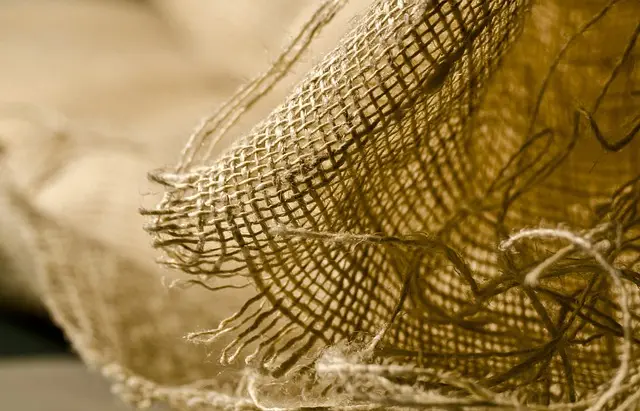Red Maeng Da and White Maeng Da are two distinct kratom strains often used for muscle soreness relief. Red Maeng Da is known for its potent analgesic properties due to its alkaloids like 7-hydroxymitragynine, which can effectively address severe muscle pain without the usual sedative effects of opioids. It's favored by those seeking strong pain management without dependency risks. White Maeng Da, on the other hand, offers a more balanced energy and mood enhancement, which can aid recovery from muscle soreness while maintaining mental clarity and physical energy. This strain is suitable for individuals who prefer not to feel overly sedated. Both strains engage with opioid receptors, providing natural pain relief, but differ in their impact on the user's energy levels and overall well-being. When considering Red Maeng Da vs White Maeng Da for muscle soreness, personal preference and the desired balance between pain relief and energy levels play a significant role. Users should start with a low dose, monitor their response, and consult with healthcare professionals before integrating kratom into their health regimen, to ensure safe use and effective outcomes.
Muscle soreness, whether from intense workouts, sports activities, or daily physical tasks, can impede recovery and affect overall well-being. Exploring natural alternatives for relief, this article sheds light on how kratom, particularly the strains Red Maeng Da and White Maeng Da, can provide potent analgesic effects without the side effects often associated with traditional pain medication. We will delve into the causes of muscle soreness, examine kratom’s role as a natural remedy, and compare the unique properties of Red and White Maeng Da to understand their effectiveness in alleviating discomfort. Join us as we explore the potential benefits of these strains in the context of muscle soreness relief.
- Understanding Muscle Soreness and Its Causes
- Kratom as a Natural Remedy for Muscle Soreness: An Overview
- Red Maeng Da Kratom: A Deep Dive into its Analgesic Properties
- White Maeng Da Kratom: Pain Relief and Energy Balance
- Comparing the Effects of Red and White Maeng Da for Muscle Soreness Relief
Understanding Muscle Soreness and Its Causes

Muscle soreness, often characterized by discomfort or pain in the muscular tissues, can arise from a variety of sources, including intense physical activity, overuse injuries, and even certain medical conditions. When engaging in exercise, particularly strenuous activities like weightlifting or high-intensity interval training, muscle fibers experience microtears and inflammation, leading to the familiar sensation of delayed onset muscle soreness (DOMS). This natural response to exertion is where the discussion of kratom’s potential applications becomes relevant. Kratom, a tropical evergreen tree native to Southeast Asia, has been traditionally used in its regions for pain management and energy enhancement. Within the kratom family, two prominent strains are red Maeng Da and white Maeng Da, each offering distinct properties. Red Maeng Da is renowned for its analgesic effects, which may be particularly beneficial for addressing muscle soreness. It contains alkaloids such as 7-hydroxymitragynine, which has been suggested to play a role in pain relief. Conversely, white Maeng Da is known for its stimulating and uplifting properties, which might aid in recovery by reducing mental fatigue and enhancing the body’s natural healing processes. Understanding the nuances between these strains can be crucial for individuals seeking muscle soreness relief tailored to their specific needs and activity levels. It is imperative to approach the use of kratom with caution, as it interacts with the opioid receptors in the brain and can have potent effects; therefore, it should be used responsibly and in accordance with local legal guidelines.
Kratom as a Natural Remedy for Muscle Soreness: An Overview

Kratom, a tropical evergreen tree native to Southeast Asia, has gained attention in various natural health circles for its potential therapeutic properties, particularly in alleviating muscle soreness. The leaves of kratom contain compounds known as alkaloids, with mitragynine and 7-hydroxymitragynine being the most prevalent. These active components are believed to interact with the body’s opioid receptors, offering both pain-relieving and sedative effects. For individuals experiencing muscle soreness, kratom is touted as a natural alternative to pharmaceutical painkillers.
When considering kratom strains for muscle soreness relief, two prominent varieties are red Maeng Da and white Maeng Da. Red Maeng Da is often revered for its calming effects and potent analgesic properties, making it a popular choice among those seeking to mitigate pain without the sedative side effects typically associated with opioids. Conversely, white Maeng Da is known for its invigorating and energizing qualities, which can be beneficial for relieving muscle soreness while promoting mental clarity and physical energy. Users often experiment with different strains and dosages to find the most effective balance for their specific needs, as individual responses to kratom can vary. It’s crucial to approach the use of kratom with caution, adhering to recommended dosages and considering potential interactions with other medications. As with any supplement or medication, it is advisable to consult with a healthcare professional before incorporating kratom into one’s wellness regimen.
Red Maeng Da Kratom: A Deep Dive into its Analgesic Properties

Red Maeng Da kratom, a strain originating from the forests of Thailand, is renowned for its potent analgesic properties, making it a subject of significant interest among those seeking relief from muscle soreness. Unlike its counterpart White Maeng Da, which is known to provide stimulating effects, Red Maeng Da is primarily celebrated for its soothing and pain-relieving qualities. The alkaloids present in Red Maeng Da, namely 7-hydroxmitragynine and mitragynine, are believed to interact with the body’s opioid receptors, effectively reducing pain perception without the need for prescription opiates. Users often report a longer duration of pain relief compared to other strains, which is advantageous for those experiencing chronic or acute muscle soreness. The analgesic effects of Red Maeng Da are not only considered effective but also gentle on the user, with fewer side effects commonly associated with synthetic painkillers. When incorporating Red Maeng Da into a wellness regimen, it’s crucial to adhere to recommended dosages and to consult with healthcare professionals, especially if one has pre-existing health conditions or is taking other medications. This ensures a safe and effective approach to achieving muscle soreness relief.
White Maeng Da Kratom: Pain Relief and Energy Balance

White Maeng Da Kratom is well-regarded for its potent pain-relieving properties, offering a soothing effect that can alleviate muscle soreness effectively. Unlike its red counterpart, White Maeng Da is known to provide a more balanced energy level while delivering relief. This unique dual action makes it particularly beneficial for individuals seeking respite from chronic pain or post-workout discomfort without feeling overly sedated. The alkaloids present in White Maeng Da, such as 7-hydroxymitragynine and mitragynine, are thought to interact with the body’s opioid receptors, which can lead to significant analgesic effects. Users often report that White Maeng Da helps them maintain a sense of well-being and vitality alongside its pain-relieving benefits, making it an appealing alternative to Red Maeng Da for those looking for a more invigorating experience without the intense energy that some other strains provide. When comparing White Maeng Da to Red Maeng Da, it’s clear that while both are powerful in their own right, White Maeng Da offers a more balanced approach to pain management and overall vitality.
Comparing the Effects of Red and White Maeng Da for Muscle Soreness Relief

Red Maeng Da and White Maeng Da are two strains of the kratom leaf, each with distinct alkaloid profiles that can influence their effects on muscle soreness relief. Users often report that Red Maeng Da, with its higher concentration of 7-hydroxymitragynine, provides a more potent analgesic effect, which can be particularly beneficial for those experiencing severe muscle soreness. This alkaloid is believed to contribute significantly to kratom’s pain-relieving capabilities. Conversely, White Maeng Da contains higher levels of mitraphylline and 7-hydroxymitragynine compared to other white strains, offering a balanced effect that may be less intense than the red strain but still effective for muscle discomfort. Users seeking a gentle yet potentially powerful analgesic response might find White Maeng Da to be a suitable option. Both strains have their advocates, and the choice between Red and White Maeng Da for muscle soreness relief often comes down to personal preference and the desired intensity of the effects. It’s advisable for individuals to start with a low dose and gradually increase it as needed while monitoring their response to determine which strain best suits their needs for muscle soreness relief.
Muscle soreness can be a significant impediment to an active lifestyle, often resulting from intense physical activity or injury. Exploring natural remedies for this discomfort, the article delved into the use of kratom, particularly focusing on Red Maeng Da and White Maeng Da varieties. Both strains exhibit distinct properties; Red Maeng Da is lauded for its potent analgesic effects, offering relief from muscle soreness without the side effects often associated with pharmaceutical alternatives. Conversely, White Maeng Da is revered for its ability to balance pain relief with a boost in energy levels. Comparing the two strains highlights their unique contributions to alleviating muscle pain, making them valuable options for those seeking holistic solutions. For individuals looking to mitigate muscle soreness naturally, understanding the nuances between Red Maeng Da and White Maeng Da kratom can help determine which variety aligns best with their wellness goals.






